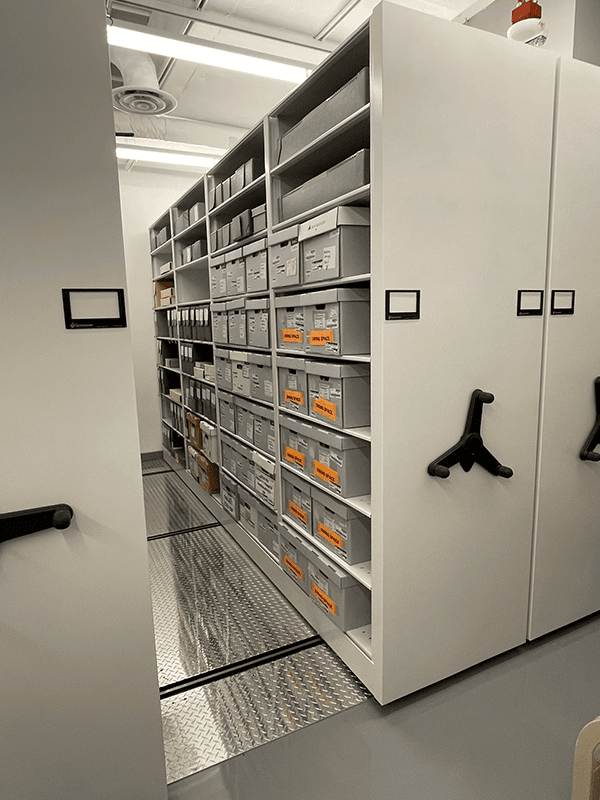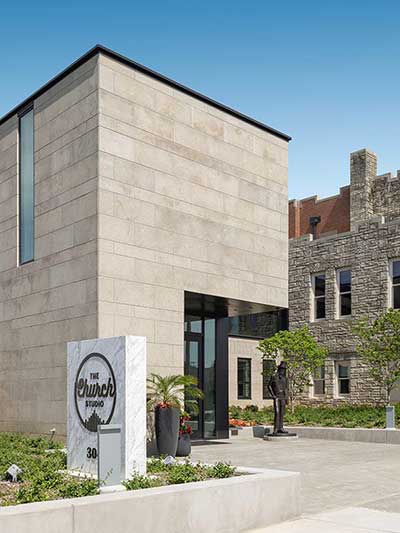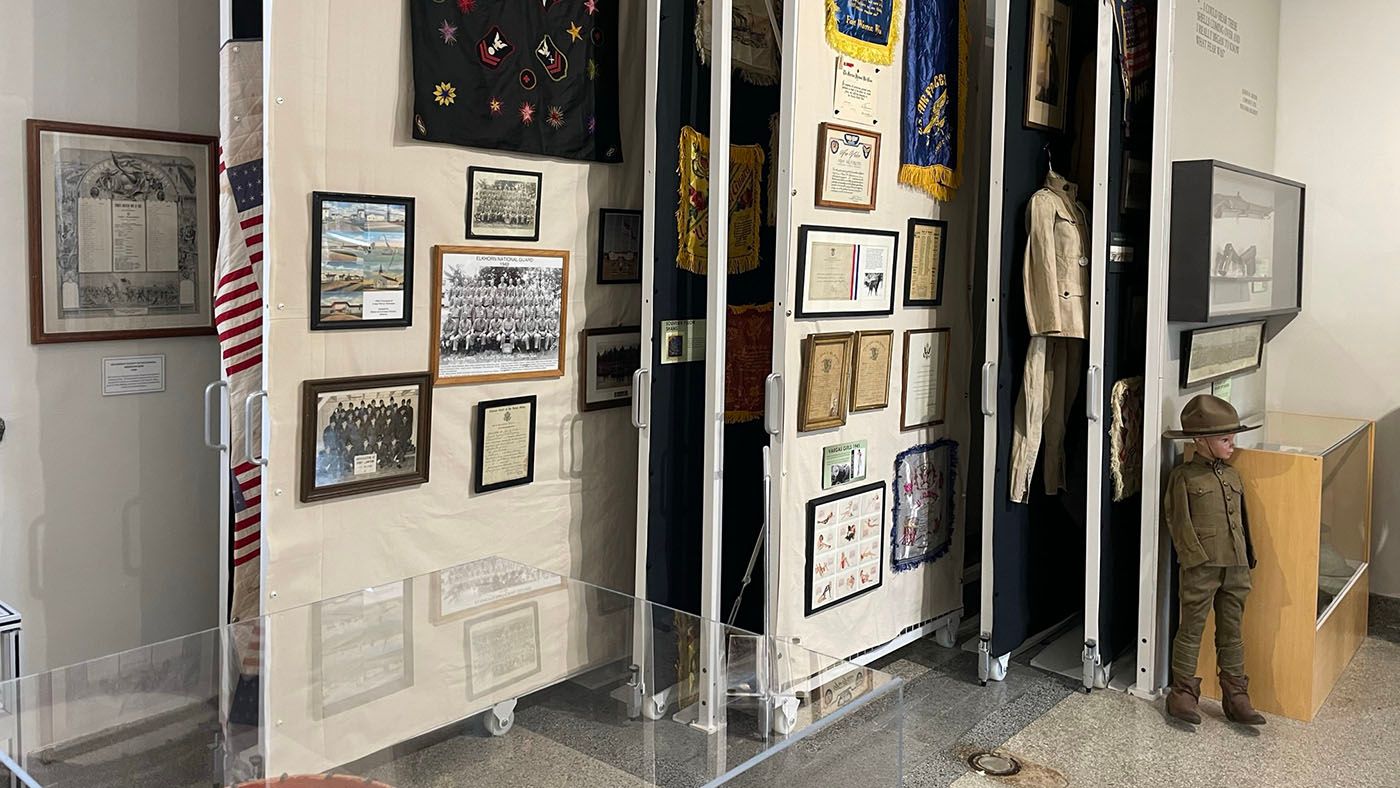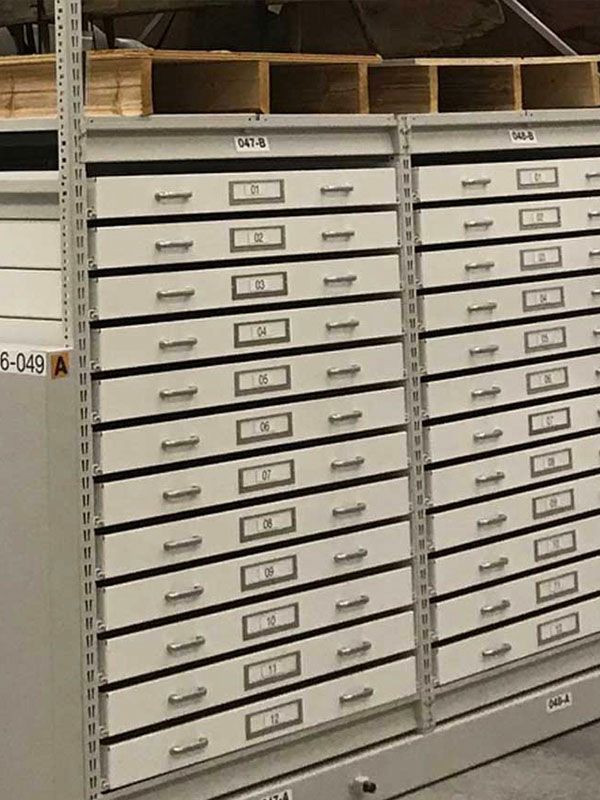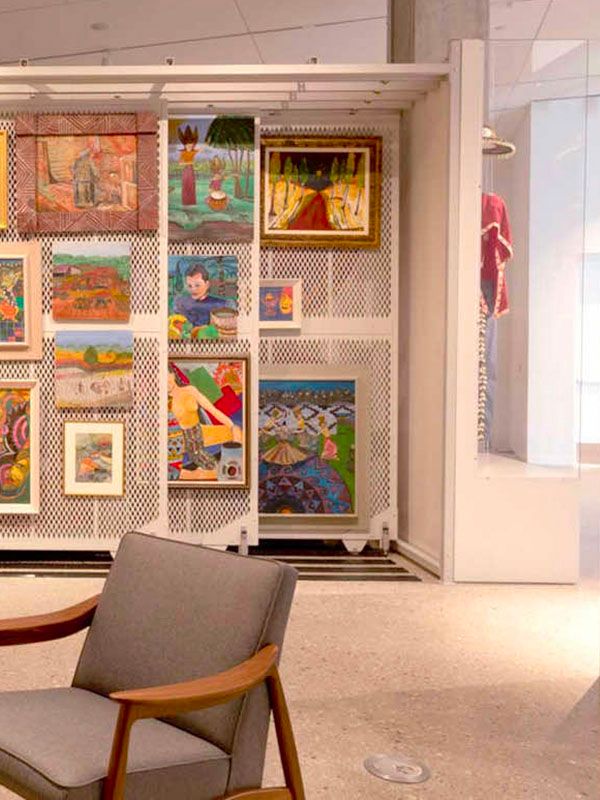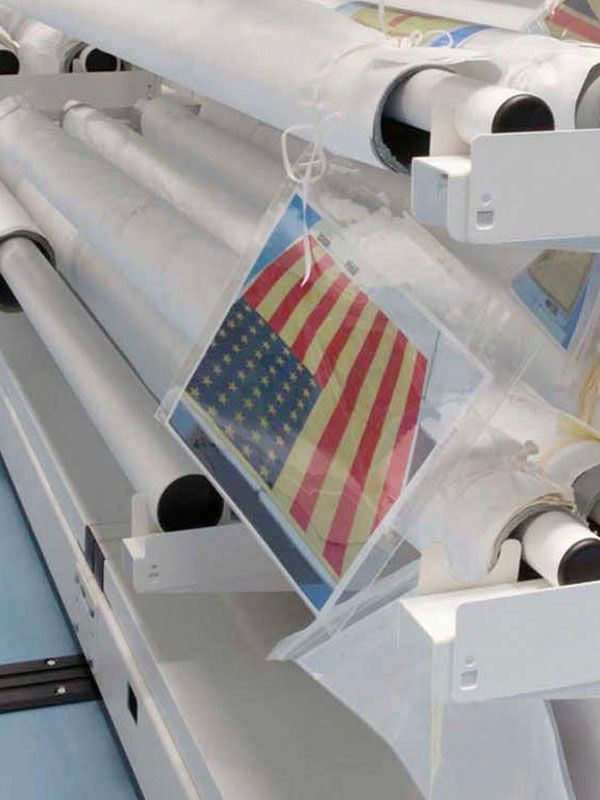New York, New York
The Fashion Institute of Technology (FIT)
A new approach to fashion storage helped this museum achieve prestigious AAM accreditation. Fashion Institute of Technology
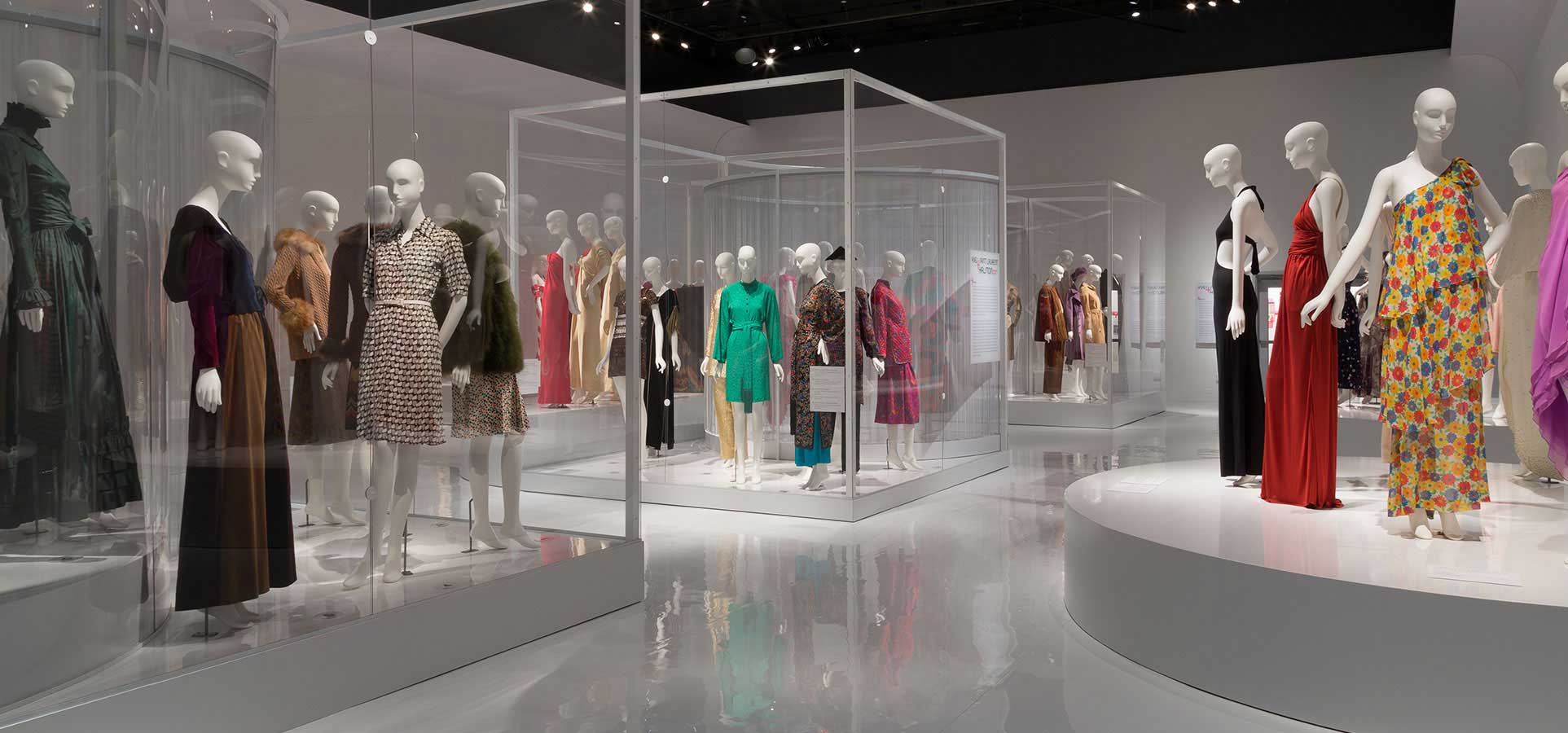
A renovated space for a stunning collection
Located in the heart of Manhattan, the Fashion Institute of Technology (FIT) is an internationally recognized college for design, fashion, art, communications, and business. The Museum at FIT is open to the public and maintains an ambitious exhibition schedule, drawing from its extensive collection to mount five exhibitions per year.
The collection comprises around 50,000 objects from many of the world’s most well-known designers, from Adrian to Yves St Laurent. When pieces aren’t on display, they’re housed in two 5,000-square-foot climate-controlled rooms that are fitted with Spacesaver shelving on compact mobile systems. Organized alphabetically by designer, the collections area is a model of best practices for collections storage.
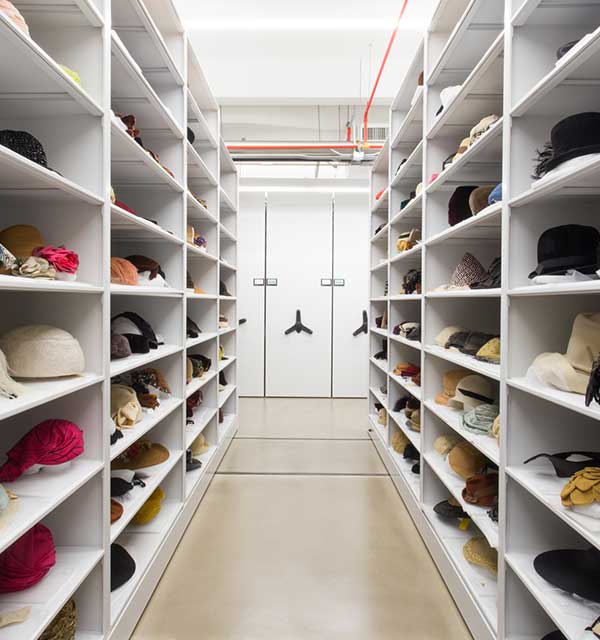
"An impeccably organized new space"
- ELLE Magazine
Achieving AAM accreditation was one of the main drivers behind the renovation.
The area wasn’t always like this, though: the museum was founded in 1969 and the collections area had become overcrowded after decades of growth. An influx of new staff in the early 2000s led to a renewed desire to gain accreditation from the American Alliance of Museums (AAM), a prestigious distinction that recognizes museums that follow best practices and achieve their mission. The goal of gaining accreditation inspired a major effort to renovate the collections area.
A Plan to Optimize Limited Space
A significant portion of the AAM accreditation process involves following best practices for collections storage. Expanding the overcrowded storage rooms was out of the question, given the landlocked nature of FIT’s building and the demand for educational spaces within it. “We weren’t getting any more space on campus,” said Senior Conservator Ann Coppinger, who played an instrumental role in planning the renovation. “We had those two rooms and that was it. There would be no expansion, no adding on, and so we knew we had to maximize volume.”
The senior registrar, Sonia Dingilian, and her team conducted a thorough inventory to determine exactly what needed to be stored and how much space was needed to properly house and store thousands of costumes, shoes, hats, and other accessories. “We had to figure out the best way to store these objects within the space that we had,” Coppinger said.
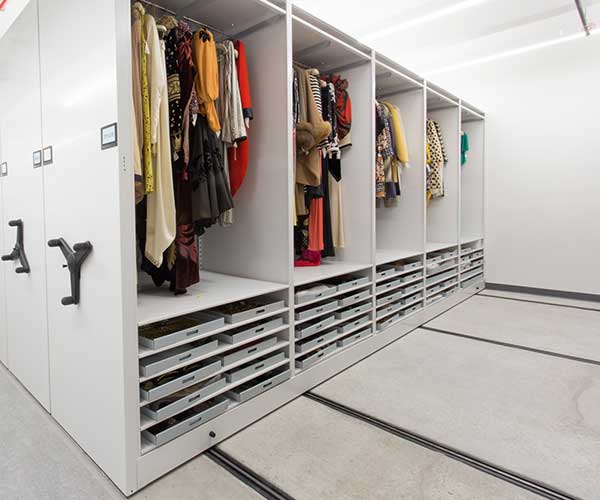
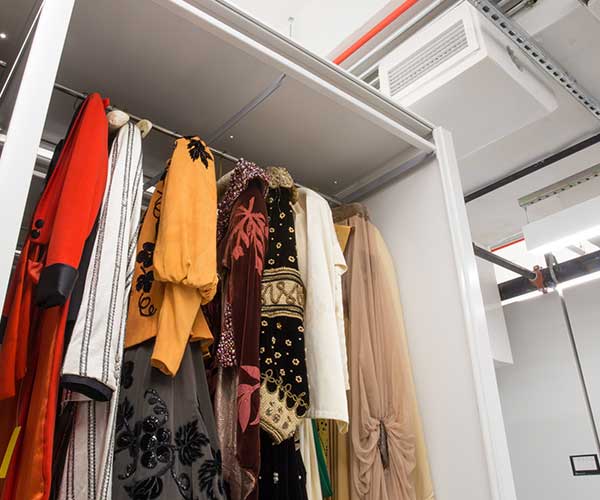

They decided that the best way to maximize volume would be to install compact storage systems from Spacesaver. The layout is clean and simple: the architect relocated the access doors to create one long central aisle through each room, with compactors on either side. The units were fitted with 4-Post shelving that was configured to optimize space on the interior.
About AAM Accreditation
Museum staff’s desire to pursue and achieve AAM accreditation was one of the main drivers behind the renovation project. Accreditation is a rigorous process based on a self-study program as well as peer review. AAM accredited museums include the various Smithsonian museums and galleries, the California Academy of Sciences, and more.
All applicants are evaluated on the following criteria:
- Public Trust and Accountability
- Mission and Planning
- Leadership and Organizational Structure
- Collections Stewardship
- Education and Interpretation
- Financial Stability
- Facilities and Risk Management
The program provides an excellent opportunity for museum professionals to pursue best practices and ultimately prove their value to funders, policy makers, and others.
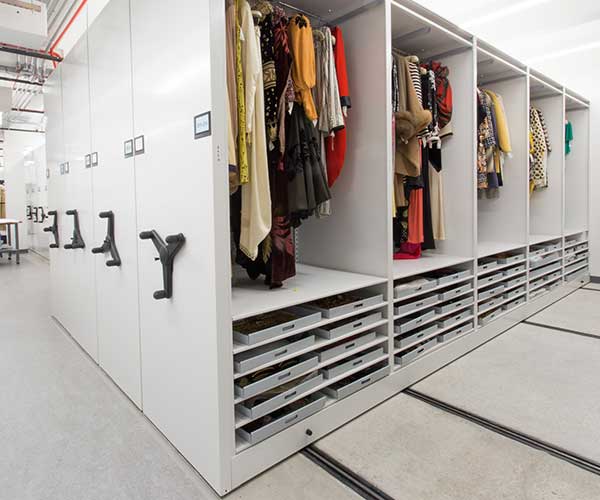
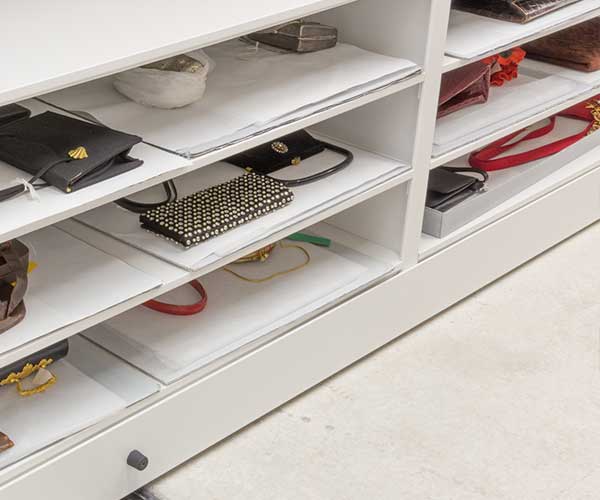
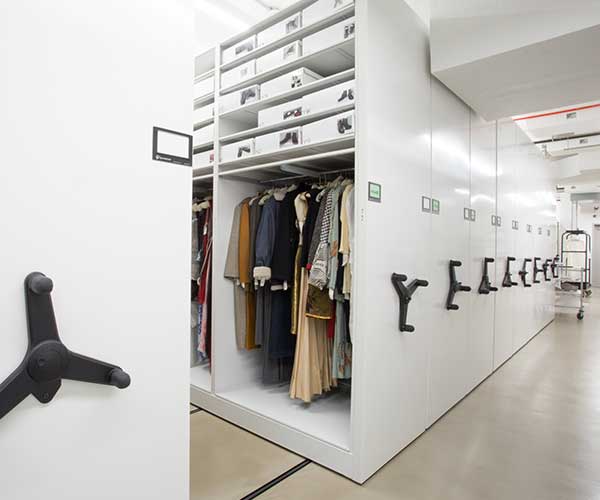
The property saw the following benefits
Room to Grow
Because the Museum at FIT continues to build its collection in a limited space, the fashion storage equipment was designed to provide room to grow without expanding the rooms’ footprint. The shelving can be reconfigured without special tools, and compact shelving allows staff to safely store many more objects in the same space as before.
Partners in Precision
The local Spacesaver distributor collaborated on the fashion storage system layout and performed the installation. “We gave all the dimensions to them and there was not one issue,” Coppinger said. “Everything was spot on. We were thrilled with the installation; it was totally perfect.”
A Secure Setting
The Spacesaver system offers protection from dust, light, and any intentional and/or accidental discharge from overhead fire protection systems. Museum staff place and retrieve objects as needed, and museum visitors can view selections from the collection in the galleries. Researchers can view objects online and in study areas.

"Listen to the architects, the space planners, the engineers. Draw upon their knowledge."
- Ann Coppinger, Senior Conservator
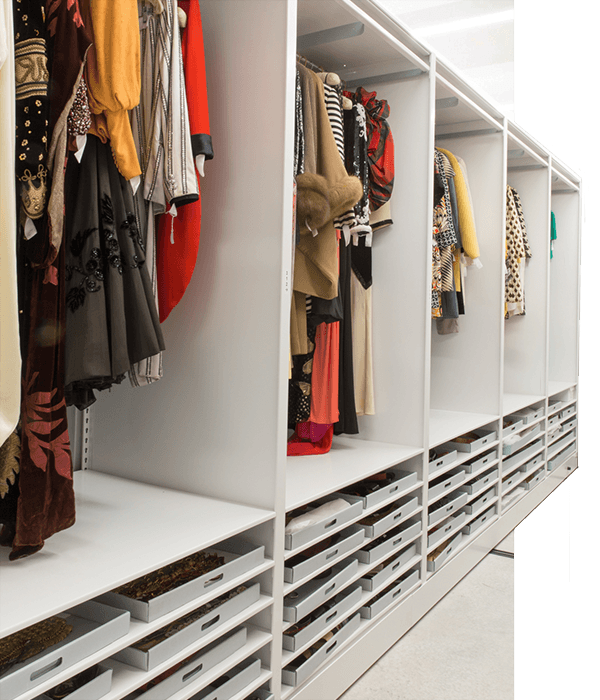
Successful Accreditation
Accreditation from the AAM involves a rigorous internal review of a museum’s facilities and practices, followed by an on-site evaluation by external museum professionals. Collections stewardship is one of the seven core standards on which a museum is assessed.
After years of preparation, renovation, rehousing, and organizing, the Museum at FIT received accreditation in 2012. The peer reviewers found the collections to be “well organized and carefully preserved.”
To others embarking on a storage facilities renovation Coppinger offered these words of advice: “You absolutely must have institutional support. And you have to be willing to learn about things they didn’t teach you in school. Listen to the architects, the space planners, the engineers. Draw upon their knowledge. It’s a lot of work, but it’s our job.”
Your Partner in Collections Care
Spacesaver is committed to helping museums and other institutions as they pursue best practices in protecting and preserving collections. For nearly 50 years we’ve offered innovative approaches to optimizing space and maintaining ideal preservation environments.
Our experienced local consultants, backed up by our in-house engineering and manufacturing professionals, can partner with your team to help preserve the past and prepare for the future.
"A collection is like a shark: it has to keep moving or it dies."
- Valerie Steele , Director and Chief Curator
